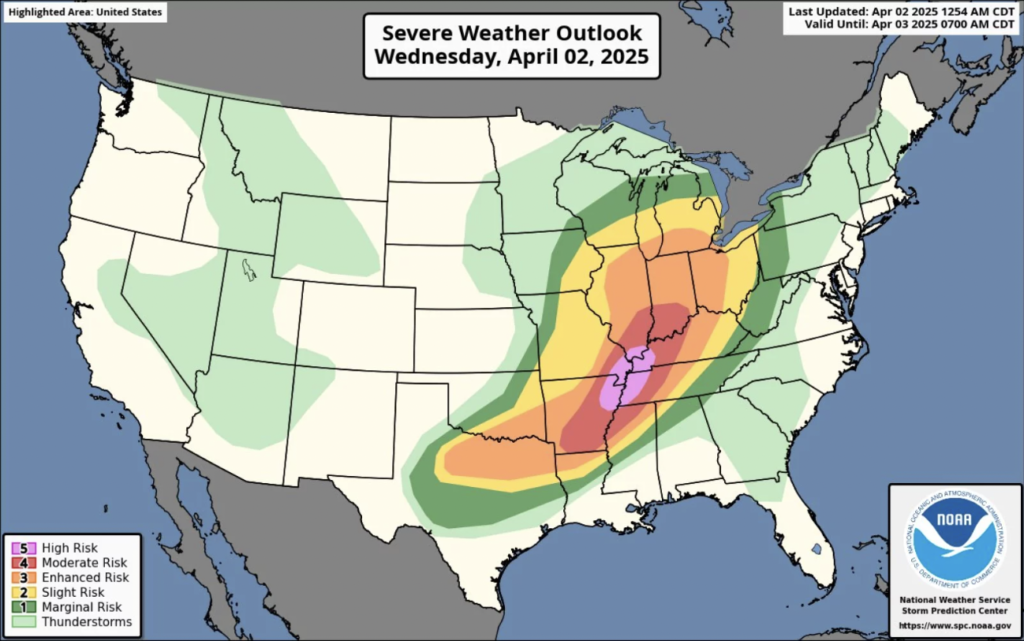A powerful storm system ripped through the Midwest and South, leaving a path of destruction across multiple states. Tornadoes, fierce winds, and heavy rainfall caused widespread damage, injuring residents, destroying homes, and knocking out power for thousands. Emergency services are scrambling to respond as more severe weather looms.

Tornadoes and Widespread Destruction
Several tornadoes touched down across states like Missouri, Kentucky, Tennessee, and Arkansas, leveling homes and flipping vehicles. The National Weather Service confirmed multiple tornado touchdowns, with wind speeds exceeding 100 mph in some areas. In rural towns, entire neighborhoods were reduced to rubble. Rescue teams are searching for survivors as reports of injuries and fatalities continue to emerge.
In addition to tornadoes, straight-line winds reaching hurricane strength caused significant structural damage. Power lines snapped, trees were uprooted, and highways became impassable. Cities such as St. Louis and Nashville reported major disruptions, with emergency crews working around the clock to clear debris and restore essential services.
Severe Weather Triggers Flash Flooding
Torrential rainfall accompanied the storms, triggering flash floods in low-lying areas. Rivers overflowed, submerging roads and stranding vehicles. Emergency officials issued evacuation orders in some communities as rising waters threatened homes and businesses.
In Kentucky, first responders rescued dozens from flooded vehicles and homes. Authorities urged residents to avoid travel, as many roads were washed out or blocked by debris. The flooding threat remains high as storm systems continue moving east.
Power Outages and Infrastructure Damage
Millions faced power outages as strong winds and lightning strikes damaged electrical grids. Utility companies reported extensive damage to power lines and substations, making restoration efforts slow and dangerous. Some areas could be without power for days, leaving residents to cope with freezing temperatures overnight.
The storms also disrupted transportation, forcing airport delays and highway closures. Travelers faced canceled flights, while truck drivers found themselves stranded on highways littered with overturned semi-trucks.
Emergency Response and Ongoing Threats
Governors in affected states declared emergencies to mobilize resources and coordinate relief efforts. The National Guard was deployed to assist with rescues and debris removal. Shelters were set up for displaced residents, but many communities still lack basic necessities like food, water, and medical aid.
Meteorologists warned that the severe weather threat is not over. More storms are expected to develop in the coming days, with additional tornadoes, damaging winds, and heavy rain possible. Residents are urged to stay alert, monitor weather updates, and have emergency plans in place.
Conclusion
The Midwest and South are reeling from a brutal storm system that has left destruction in its wake. With lives lost, homes destroyed, and entire communities shaken, the focus now turns to recovery and preparedness for potential future storms. Emergency services continue rescue operations while residents assess the damage and begin rebuilding. The coming days will be critical as the region braces for more severe weather.